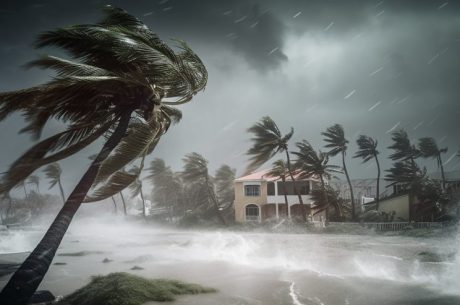Table of Contents
If you’re dealing with water damage in ceiling, acting quickly can save your home from mold, structural issues, and costly repairs. The right professionals will not only stop the leak but fully restore your ceiling—drying, sanitizing, and rebuilding as needed. PuroClean of Coral Gables offers expert water damage restoration to tackle ceiling issues from start to finish, ensuring your home is safe, dry, and restored.
What Exactly Is Water Damage in Ceiling?
Water damage in ceiling is more than just an unsightly stain. It often indicates a deeper issue—leaks from the roof, faulty plumbing, or even long-term condensation buildup. Ignoring water damage can lead to sagging drywall, weakened structural support, mold growth, and even potential health risks for your family.
Ceiling water damage can present in many ways, including discoloration, bubbling paint, sagging plaster, or even dripping water. Recognizing these signs early and calling the right professionals is crucial to prevent further damage and costly repairs.
Common Causes of Water Damage in Ceiling
Understanding the causes of ceiling water damage can help you prevent future problems and ensure you call the right professionals when damage occurs. Some common causes include:
- Roof leaks: Damaged shingles, worn flashing, or gaps around vents and chimneys can allow rainwater to seep into your ceiling.
- Plumbing issues: Burst or leaking pipes, especially in bathrooms or kitchens on upper floors, are common culprits.
- Condensation: Poor ventilation in bathrooms, kitchens, or attics can lead to moisture accumulation, which may drip into ceilings over time.
- Clogged gutters: Overflowing gutters may redirect water toward your home, seeping into ceilings.
- Insulation failure: Wet or degraded insulation can trap moisture behind ceilings, causing hidden water damage that may not be visible until it’s severe.

Why Immediate Action Matters
Time is of the essence when you notice water damage in your ceiling. Waiting too long can worsen the damage, increase repair costs, and create health hazards.
- Structural Risk
Water weakens drywall, plaster, and ceiling joists. Over time, this can lead to sagging or even collapse if left untreated. Immediate intervention prevents structural compromise. - Mold Growth
Moisture left in ceilings can produce mold within 24–48 hours. Mold not only damages materials but can cause allergic reactions and respiratory problems for your household. - Hidden Damage
The visible stain may only be the tip of the iceberg. Moisture can seep deep into drywall, insulation, and wooden framing, making professional assessment essential. - Insurance Claims
Documenting water damage early and involving professionals improves your chances of a smooth insurance claim process. Professionals provide detailed reports and restoration documentation.
Who to Call When You See Water Damage in Ceiling
When facing ceiling water damage, it’s important to contact professionals with experience in water damage restoration. Here’s who you should consider:
1. Water Damage Restoration Company
Why call them: Restoration companies specialize in detecting, drying, and repairing water-damaged structures.
What they do: Professionals use moisture meters, infrared imaging, industrial dehumidifiers, and air movers to fully dry affected areas. They remove water-damaged materials, clean and sanitize surfaces, and rebuild damaged ceilings as needed.
PuroClean of Coral Gables provides comprehensive water damage restoration, from detection and drying to repair and mold prevention, ensuring your home is safe, dry, and restored.
2. Plumber
Why call them: If the damage originates from leaking or burst pipes, a licensed plumber can fix the source to prevent further water intrusion.
3. Roofer
Why call them: For roof-related leaks, a professional roofer identifies gaps, damaged shingles, or faulty flashing and repairs the source of the leak to protect your ceiling.
4. General Contractor / Drywall Specialist
Why call them: After the area is dry, you may need someone to repair or replace damaged ceiling materials. They handle drywall replacement, plaster repairs, and texture matching for a seamless finish.
5. Mold Remediation Specialist
Why call them: If mold has begun to develop, certified mold remediation specialists remove it safely, prevent future growth, and restore a healthy indoor environment.
From mold detection and removal to complete water damage repair, PuroClean of Coral Gables ensures your home is free from mold and fully restored.
How Professionals Handle Water Damage in Ceiling
Here’s what you can expect when experts tackle ceiling water damage:

1. Inspection & Assessment
Technicians assess the ceiling and surrounding areas for moisture using moisture meters and thermal imaging cameras. They determine the extent of damage to drywall, insulation, and wooden framing.
2. Safety Precautions
To ensure safety, power may be shut off near water-affected areas. Technicians protect furniture, vents, and floors, and contain the work area to prevent cross-contamination.
3. Stop the Leak
Before any restoration begins, the source of the leak—plumbing or roof—must be repaired. Addressing the root cause prevents recurring water damage.
4. Drying & Dehumidification
Industrial dehumidifiers and air movers are used to remove all moisture from ceilings, walls, and hidden cavities. This step prevents mold and restores structural integrity.
5. Remove Damaged Materials
Water-damaged drywall, plaster, or insulation is safely removed. Any mold-contaminated materials are properly disposed of to protect your home and family.
6. Repair & Rebuild
New drywall or plaster is installed, joints are taped and finished, and the ceiling is prepped for painting. Experts use stain-blocking primers to prevent discoloration from showing through paint. Texture is matched to the original ceiling to restore its appearance seamlessly.
7. Final Inspection & Prevention Advice
Once repairs are complete, technicians verify that the ceiling is dry and structurally sound. They offer advice on preventive measures such as roof maintenance, gutter cleaning, and proper attic ventilation.
DIY vs. Professional Help
While DIY fixes may seem tempting, water damage in ceiling is often more complex than it appears. Professionals provide:
- Complete drying: Hidden moisture can linger behind walls and ceilings without industrial equipment.
- Safety assurance: Cutting into ceilings near electricity or plumbing can be dangerous.
- Mold prevention: Professionals contain mold and clean it safely using proper filtration.
- Insurance support: Professionals provide documentation to support claims.
- High-quality finish: Ceiling repairs are seamless and durable, preventing future issues.
Steps You Can Take While Waiting for Help
While waiting for restoration experts:
- Contain the leak: Place buckets under drips or poke a small hole to release pooled water.
- Turn off electricity: If water is near lights or outlets, turn off power to prevent hazards.
- Increase airflow: Use fans or open windows to begin drying, if safe.
- Document damage: Take photos for insurance and professional reference.
- Call professionals: Contact a certified water damage restoration company immediately.
FAQs (Frequently Asked Questions)
Q1: How quickly should I call a professional for ceiling water damage?
Call immediately—ideally within 24–48 hours—to prevent mold growth and structural issues.
Q2: Can I just paint over a water stain?
No. Painting over wet or damp areas traps moisture, causing mold or recurring stains. Only paint after professional drying and priming.
Q3: Will insurance cover ceiling water damage repair?
Most policies cover sudden events like burst pipes or storm damage. Professional documentation improves claim approval.
Q4: How long does ceiling water damage repair take?
Small areas may be repaired in a few days. Extensive damage with drying, mold remediation, and structural repair can take a week or longer.
Q5: How can I prevent water damage in the ceiling?
Regular roof inspections, gutter cleaning, plumbing maintenance, and proper attic ventilation help prevent future damage.
Why Choose PuroClean of Coral Gables
PuroClean of Coral Gables specializes in restoring homes with water damage in ceiling. Our certified team provides:
- 24/7 emergency response: We act fast to minimize damage.
- Professional equipment: Moisture meters, thermal imaging, and industrial dehumidifiers ensure thorough drying.
- Full-service restoration: From leak repair to ceiling rebuild, we handle every step.
- Mold remediation: We prevent future mold growth with safe, effective methods.
- Insurance documentation: Detailed reports support your claim for a smooth process.
Call (305) 894-4343 today for immediate assistance and expert water damage restoration. Don’t wait—protect your home and peace of mind.
Summary:
Water damage in ceiling is a serious problem that requires immediate professional attention. Acting quickly prevents structural damage, mold growth, and costly repairs. Our team at PuroClean of Coral Gables provides fast, professional water damage restoration, addressing leaks, drying, repairs, and prevention so your home remains safe and dry.




